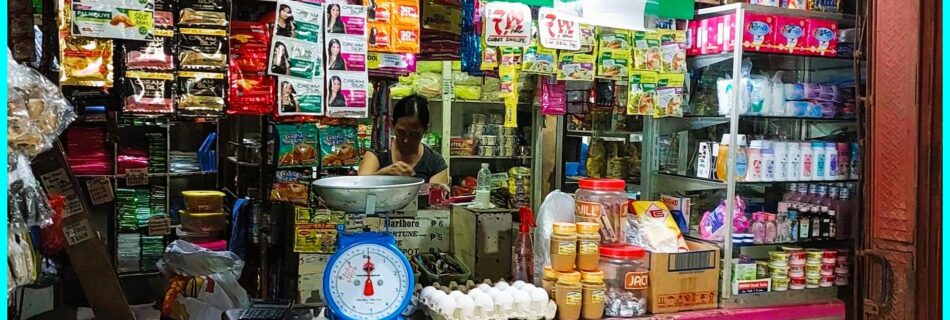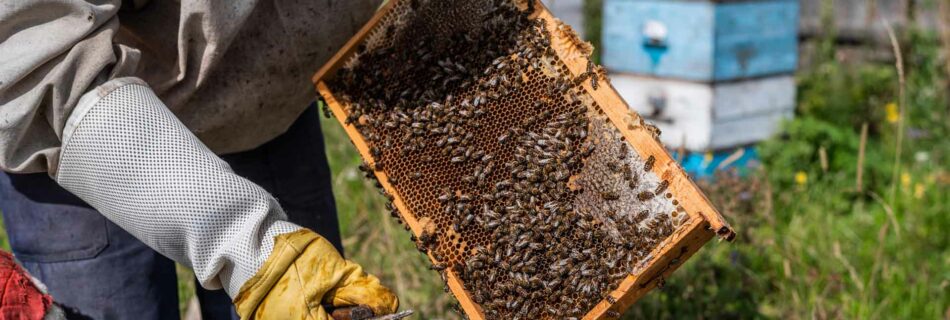Photo of the Day for February 25, 2024 – Tingi culture everywhere on Negros Island
In the Philippines, a pervasive “tingi culture” prevails, characterized by the purchase and exchange of small quantities of goods—be it a single cigarette, a sachet of shampoo, or even just one egg. Traditionally, this practice thrives within neighborhood sari-sari stores but has progressively infiltrated corporate realms. A myriad of products, including shampoo, instant coffee, and cosmetics, are meticulously packaged in sachets to accommodate the consumer behavior associated with the “tingi culture.” This mindset is deeply intertwined with the prevalent poverty in the Philippines, where many individuals lack the financial means to purchase items in bulk, despite potential cost savings over time. Consequently, acquiring only what is immediately needed appears to be the more practical approach. However, this contemporary cultural phenomenon has inadvertently exacerbated an environmental crisis—plastic pollution. The majority of products tailored for the “tingi” market are packaged in plastics, ranging from sachets to plastic bags. Shockingly, the average Filipino utilizes 591 sachets, 174 shopping bags, and 163 plastic labo bags annually. Moreover, the country witnesses the daily consumption of almost 57 million shopping bags, amounting to approximately 20.6 billion pieces per year. Despite efforts to curb plastic usage and the implementation of bans in certain Philippine cities, the tingi culture persists, particularly in rural areas. Consequently, resolving this issue remains an ongoing challenge, necessitating sustained and comprehensive strategies. During childhood, it was customary for individuals to purchase small quantities of goods, such as a quarter bottle of vinegar, from local sari-sari stores. In these transactions, customers would often bring their containers, which the store owner would then fill with the requested amount of vinegar. Presently, the practice of buying small quantities persists, albeit with a noticeable shift. Rather than utilizing containers, people now commonly opt for sachets, containing similar or smaller amounts of vinegar. These sachets have become prevalent not only in sari-sari stores but also in larger grocery establishments. The adoption of sachets was framed by large corporations as a response to a perceived need for convenience, aligning with the cultural preference for small-scale purchases. However, it’s important to note that this transition wasn’t driven by consumer demand; the existing system of using containers at the store was functioning effectively. Over time, the emphasis on convenience supplanted traditional practices. Recollections from earlier years reveal that reusable containers weren’t exclusive to trips to the sari-sari store; they were also commonplace during visits to the public market. Plastic bags existed but were typically not provided free of charge; customers had to purchase them separately. Only a few decades ago, the practice of bringing reusable containers to the market was widespread. Unfortunately, this custom has gradually declined. Even in rural areas, it’s uncommon to observe individuals bringing containers while shopping, as plastic bags have become ubiquitous and are often distributed free of charge. Recently, spurred by environmental concerns, governments have started implementing bans on single-use plastic bags in various regions. As the concept of Zero Waste gains momentum, there has been an emergence of stores advocating for sustainable shopping practices. These establishments prioritize non-problematic packaging and encourage customers to bring their containers. They serve as examples of how businesses could have adapted to cultural practices in a sustainable manner. Challenging the narrative propagated by large corporations is crucial; it’s often suggested that the prevalence of plastic sachets addresses the needs of economically disadvantaged individuals. In reality, it was the pursuit of profit that led corporations to prioritize convenience over sustainability, disregarding the environmental and health implications of their packaging choices. Moving forward, widespread adoption of traditional practices, such as bringing reusable containers when shopping, is essential. Sometimes, the path to progress involves reverting to old, sustainable ways of doing things. Pollution of this kind is an enemy to tourism, also on the Island of Negros.



